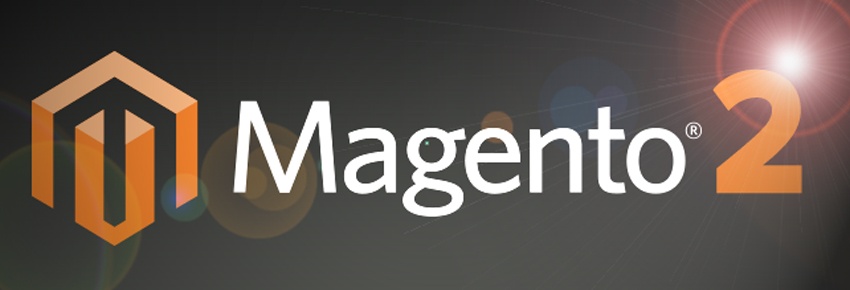Magento 2 is coming soon… What should you know about it?

It took some time, but it seems that a new version of e-commerce system Magento is finally coming. What are the main differences and benefits?
One of the most important e-commerce platforms
Magento is one of the most successful open source content management systems for e-commerce websites. It was launched in March 2008 under the name Bento by California-based company Varien, and became property of online auction site eBay in 2011. Its development remained slow for a few years, until last year, when Magento 2 was announced.
Magento uses the MySQL relational database management system, the PHP programming language and elements of the Zend Framework. There are three separate platforms: Magento Community Edition (an open source CMS that anyone is free to edit), Magento Enterprise Edition (a version based on the Community Edition, which offers more possibilities and features, but which is not free) and Magento Go (cloud-based, with web hosting services provided by Magento Inc., intended for small companies).
According to a recent study conducted to determine the most popular e-commerce platforms in the Alexa 1 million top sites, Magento CE is used by 25.6% of companies, followed by WooCommerce (20.8%). This means that both systems take 46.4% of the market share. Magento Enterprise is used by 4.4% of e-commerce platforms. Combell also allows you to choose Magento hosting for your e-commerce site.
Magento 2: 10 benefits
The new version of Magento comes with more features than version 1.
-
Modular architecture
The old Varien Library, where the elements were too interrelated, has been replaced by a new Magento Framework library, where the functional components are managed at a low level. In addition, the kernel modules are designed to work in a completely independent manner and can be replaced.
-
Controlled module integration
Before a module can be integrated in the platform, a check is performed to ensure that the module is compatible with the platform. Moreover, the database offers better control, in order to avoid structure changes that are incompatible with the version of Magento when installing a module.
-
Better security, at different levels
The root of Magento 2 will no longer be accessible using HTTP requests, but only via its pub folder. All other elements, including the source code and the config data, will also be more secure.
-
Automatic tests
Magento 2 includes this procedure that was not included in version 1. There are about 2,600 integration, 7,699 unit, 100 JS unit and 100 static tests. In addition, there are 9 test packages to test performance, with different settings, from a shop with a small amount of orders to a ‘superstore’ with tons of orders. And as if that were not enough, developers can develop their own tests, and ensure a complete coverage before application.
-
Improved performance
The kernel of Magento 2 deals with fewer and lighter objects. The cache system is now handled by special tools like Varnish. Since the structure of the catalogue was simplified, it is possible to handle larger volumes of data. Upgrading a platform, even when it has been customised, remains an easy task thanks to the new modular architecture and the light themes (see point 8).
-
Application of newer technologies
The module installation system in Magento 1 has been replaced by the Composer, which makes the management of the modules easier and more flexible. JavaScript Prototype has been replaced by jQuery, and the entire interface has been built with HTML5 and CSS3.
-
Completely renewed back-end
Thanks to a clear and user-friendly main menu, the back-end management is now much more transparent. Product pages are easier to manage thanks to the simple or advanced mode, the possibility to edit or add attributes, etc. The much-discussed file structure has been changed. While in the past the back-end code, the front-end templates and the static files were spread throughout the document root, all files of a certain module are now grouped in one place.
-
A responsive basic theme and a wide range of themes
By default, Magento 2 will offer responsive web design, on which specific themes can be based, and which is compatible with all sorts of devices, ranging from computers and tablets to smartphones. Since the interface elements of the modules are managed by the modules themselves (via the View component), the themes in Magento 2 are much lighter than in Magento 1.
-
Openness and API
While Magento 1 only offered a limited API, Magento 2 makes all possible features available via an API, which ensures compatibility with third-party software. In addition, every module can now become the provider of a service, via the Service Contracts layer.
-
Community
And, last but not least, much documentation has been and is still being produced. Much of it is already available online, but it is continuously completed by the community of developers. It must be noted that the community of developers and users is encouraged to contribute to the development of Magento 2, but that their contributions will be used for both the Community Edition and the Enterprise Edition.
Do you need more info?
Magento 2 seems very promising. You can follow the latest developments via Github and the Magento 2 Wiki. The company XI Ingenierie offers a free white paper, available in French: “Les dessous de Magento 2”.
A Developer Release Candidate has launched in March 2015. In a follow-up article, we will take a look at the road map of this new version and examine some important points that you should consider when migrating to Magento 2.


